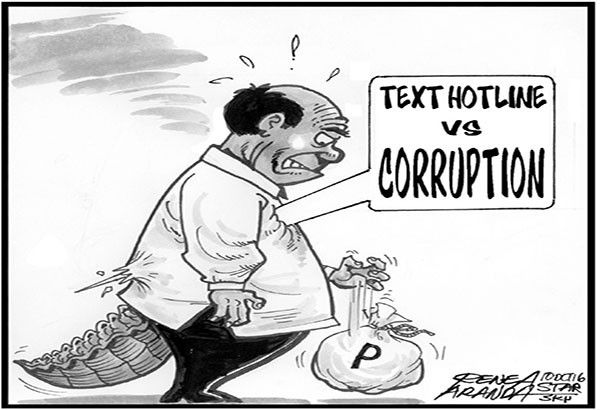Nagasaki's historic christian past

CEBU, Philippines - For history buffs like me, Nagasaki will always be remembered as the second city where the Atomic Bomb was dropped on August 9, 1945. Over a hundred thousand people were instantly incinerated. It was also the last time that a city was hit by a nuclear bomb.
Against this background, it was with great excitement for our group, led by tourism adviser Robert “Bobby” Joseph and members of the National Independent Travel Agents (NITAS), to go on a familiarization tour of the major cities of Nagasaki Prefecture, specifically Omura City, Sasebo City and Nagasaki City.
If there was anything farthest from our tourism-minded thinking, it was to come and visit Nagasaki on a holy pilgrimage. Yes, a holy pilgrimage among Catholic Christians would always be associated with thoughts of the Holy Land, or Lourdes in France or Fatima in Portugal. But a pilgrimage in Nagasaki?
We in Cebu are proud of our Christian heritage. Ferdinand Magellan, the Portuguese explorer in the employ of the Spanish Crown, came to Cebu and dropped anchor and then planted the now famous Magellan’s Cross in a kiosk, which has since become the official symbol of Cebu City.
But I dare anyone to find just one… just one historical monument depicting Christian martyrdom in Cebu? No, there is none. Martyrdom is only true among the Christians in the Middle East.
In Nagasaki City, however, there is a hill called Nishizaka. It is there where 26 Christian Jesuit martyrs were crucified on February 5, 1597, all at same time, as the Japanese warlords were persecuting Christians. Nishizaka Hill is only one such site outside of the Holy Land where Christian martyrs were crucified and killed. Today, a monument stands on top of the hill for the 26 crucified martyrs. Interestingly, a statue of San Lorenzo Ruiz, the first Filipino saint, is found behind the monument.
Behind the structure is a museum run by the Jesuits. The museum curator is Fr. Renzo de Luca of Argentina, a personal friend of Pope Francis. The museum houses artifacts and relics of the Japanese Christian martyrs.
After touring us around, Fr. De Luca officiated a Holy Mass for our group, at the St. Philip Church on Nishizaka Hill. The church had bone fragments of three of the 26 saints, St. Paul Miki, St. Jacob Kisai and St. John Goto. Again, interestingly, the bones were kept in Manila for 350 years and returned only to Japan in the 1960s.
The Nagasaki official tourism website has a listing, by the city’s tourism board, of Christian sites as “must-see” destinations for tourists.
Actually, the Christianization of Japan is said to have started in Nagasaki, when St. Francis Xavier arrived there in1549. That’s only 28 years after Magellan planted the cross in Cebu. In 1999, Japanese Catholics celebrated the 450th anniversary of the arrival of St. Francis Xavier. If not for the persecution of Christians in the past, perhaps Japan could have become a Christian nation.
While the warlord Toyotomi Hideyoshi was originally lenient to Christians, but then events turned bad and eventually led to the execution by crucifixion of 24 priests and their Japanese followers – the 26 Martyrs of Nagasaki. Hideyoshi died a year after the executions. In the year 1612, Tokugawa Leyasu established his shogunate and ordered a strict ban on Christians.
For 250 years Christianity was persecuted in Japan, resulting to more than 3,000 Christian martyrs. The Filipino San Lorenzo Ruiz was martyred in Nagasaki on September 29, 1637. The “Kirishitans” (Christian) culture has since been integrated into the general Nagasaki culture, which is why a pilgrimage to Nagasaki for Catholics is a must!
Philippine Airlines flies from Manila to Fukuoka daily and vice versa. From Fukuoka it is only a two-hour bus ride to Nagasaki.
Our group went to a small church named Oura Cathedral in a place up the Nagasaki Harbor, where in March 1865 the so-called “Hidden Christians” showed themselves to a French priest Fr. Bernard Petijean, to reveal to the world that despite the brutal repression of Catholics, Christianity survived in Japan. In 1873, the ban on Christianity was lifted.
I can’t possibly relate all the details of the Christian churches in Nagasaki in one go. But the Urakami Cathedral is worth the mention here, since the cathedral was once obliterated by the Atomic Bomb. Reportedly, after the bombing a Trappist monk was searching in the rubble of the ruined cathedral and found the head of the wooden statue of the Immaculate Heart of Mary – scarred but had a haunting look. Years later, the cathedral was rebuilt and the statue was enthroned again. Urakami Cathedral is Nagasaki’s biggest cathedral. (FREEMAN)
- Latest




























